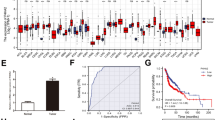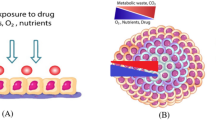Summary
Accumulation of lactate in tumor has been linked to poor prognosis of oral squamous cell carcinoma (OSCC), but the underlying mechanism remained largely uncertain. Previous studies have suggested that presence of cancer stem cells (CSCs) closely correlated with cellular malignancy of OSCC. Here, using 3D organoid culture model, we investigated whether lactate promoted CSCs phenotype in primary OSCC cells. We generated organoids using fresh OSCC specimens and verified that organoids recapitulated histopathology and cellular heterogeneity of parental tumor. Organoids were then transfected with a Wnt reporter to visualize Wnt activity. The sphere forming assay demonstrated that high Wnt activity functionally designated CSCs population in OSCC cells. Further investigations indicated that lactate treatment promoted Wnt activity and increased the expression of CSCs (i.e. CD133+ cells) in organoids. Moreover, silencing monocarboxylate transporter 1 (MCT1), the prominent path for lactate uptake in human tumor with siRNA significantly impaired organoid forming capacity of OSCC cells. Together, our study demonstrated that lactate can promote CSCs phenotype of OSCC, and MCT1 may be a therapeutic target against OSCC growth.
Similar content being viewed by others
References
Vander Heiden MG, Cantley LC, Thompson CB. Understanding the Warburg Effect: The Metabolic Requirements of Cell Proliferation. Science, 2009,324(5930):1029–1033
Doherty JR, Cleveland JL. Targeting lactate metabolism for cancer therapeutics. J Clin Invest, 2013,123(9):3685–3692
Faubert B, Li KY, Cai L, et al. Lactate Metabolism in Human Lung Tumors. Cell, 2017,171:358–371
Wilde L, Roche M, Domingo-Vidal M, et al. Metabolic Coupling and the Reverse Warburg Effect in Cancer, implications for novel biomarker and anticancer agent development. Semin Oncol, 2017,44(3):198–203
Sattler UG, Meyer SS, Quennet V, et al. Glycolytic metabolism and tumour response to fractionated irradiation. Radiother Oncol, 2010,94(1):102–109
González-Moles MA, Scully C, Ruiz-Ávila I, et al. The cancer stem cell hypothesis applied to oral carcinoma. Oral Oncol, 2013,49(8):738–746
Sun S, Liu S, Duan SZ, et al. Targeting the c-Met/FZD8 signaling axis eliminates patient-derived cancer stem-like cells in head and neck squamous carcinomas. Cancer Res, 2014,74(24):7546–7559
Simple M, Suresh A, Das D, et al. Cancer stem cells and field cancerization of oral squamous cell carcinoma. Oral Oncol, 2015,51(7):643–651
Batlle E, Clevers H. Cancer stem cells revisited. Nat Med, 2017,23(10):1124–1134
Mitra A, Mishra L, Li S. Technologies for deriving primary tumor cells for use in personalized cancer therapy. Trends Biotechnol, 2013,31(6):347–354
Centenera MM, Raj GV, Knudsen KE, et al. Ex vivo culture of human prostate tissue and drug development. Nat Rev Urol, 2013,10(8):483–487
Drost J, Clevers H. Organoids in cancer research. Nat Rev Cancer, 2018,18(7):407–418
Shah AT, Heaster TM, Skala MC. Metabolic Imaging of Head and Neck Cancer Organoids. PloS One, 2017,12(1):e0170415
Qu Y, Han B, Gao B, et al. Differentiation of Human Induced Pluripotent Stem Cells to Mammary-like Organoids. Stem Cell Report, 2017,8(2):201–215
Sonveaux P, Végran F, Schroeder T, et al. Targeting lactate-fueled respiration selectively kills hypoxic tumor cells in mice. J Clin Invest, 2008,118(12):3930–3942
Zhang Q, Shi S, Yen Y, et al. A subpopulation of CD133+ cancer stem-like cells characterized in human oral squamous cell carcinoma confer resistance to chemotherapy. Cancer Lett, 2010,289(2):151–160
Nanda KD, Ranganathan K, Devi U, et al. Increased expression of CK8 and CK18 in leukoplakia, oral submucous fibrosis, and oral squamous cell carcinoma: An immunohistochemistry study. Oral Surg Oral Med Oral Pathol Oral Radiol, 2012,113(2):245–253
Vermeulen L, De Sousa E Melo F, van der Heijden M, et al. Wnt activity defines colon cancer stem cells and is regulated by the microenvironment. Nat Cell Biol, 2010,12(5):468–476
Xie SL, Fan S, Zhang SY, et al. SOX8 regulates cancer stem-like properties and cisplatin-induced EMT in tongue squamous cell carcinoma by acting on the Wnt/β-catenin pathway. Int J Cancer, 2018,142(6):1252- 1265
Tassone P, Domingo-Vidal M, Whitaker-Menezes D, et al. Metformin Effects on Metabolic Coupling and Tumor Growth in Oral Cavity Squamous Cell Carcinoma Coinjection Xenografts. Otolaryngol Head Neck Surg, 2018,158(5):867–877
Sachs N, Clevers H. Organoid cultures for the analysis of cancer phenotypes. Curr Opin Genet Dev, 2014,24:68–73
Li L, Li C, Wang S, et al. Exosomes Derived from Hypoxic Oral Squamous Cell Carcinoma Cells Deliver miR-21 to Normoxic Cells to Elicit a Prometastatic Phenotype. Cancer Res, 2016,76(7):1770–1780
Martinez-Outschoorn UE, Peiris-Pagès M, Pestell RG, et al. Cancer metabolism: a therapeutic perspective. Nat Rev Clin Oncol, 2017,14:11–31
Rodriguez-Colman MJ, Schewe M, Meerlo M, et al. Interplay between metabolic identities in the intestinal crypt supports stem cell function. Nature, 2017,543:424–427
Author information
Authors and Affiliations
Corresponding author
Additional information
This project was supported by the National Natural Science Foundation of China (No. 81602742).
Rights and permissions
About this article
Cite this article
Zhao, H., Hu, Cy., Chen, Wm. et al. Lactate Promotes Cancer Stem-like Property of Oral Sequamous Cell Carcinoma. CURR MED SCI 39, 403–409 (2019). https://doi.org/10.1007/s11596-019-2050-2
Received:
Revised:
Published:
Issue Date:
DOI: https://doi.org/10.1007/s11596-019-2050-2




